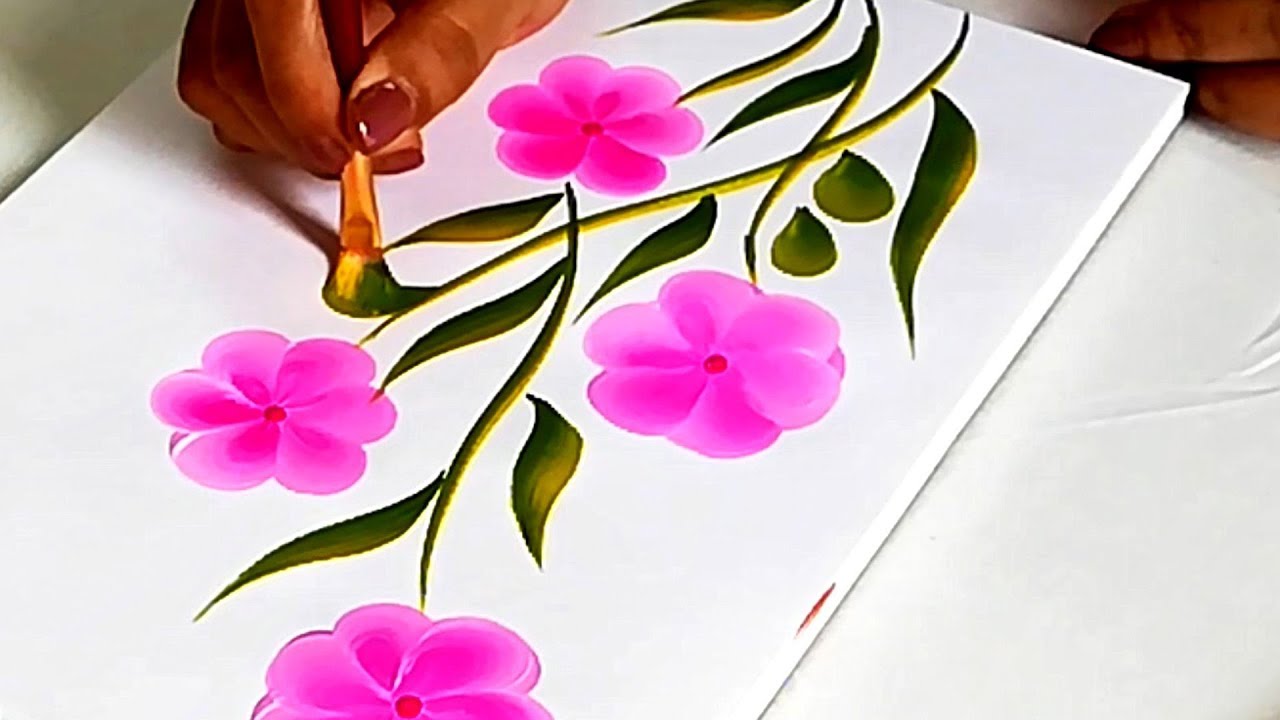Painting flowers is one of the most enjoyable and rewarding art projects—perfect for beginners and experienced artists alike. Whether you’re using acrylics, watercolors, oils, or digital tools, floral painting helps you practice color blending, shapes, texture, and creativity. Below is a simple, beginner-friendly tutorial with easy tricks to help you paint flowers successfully, even if you’re new to art.🌸 1. Start With Basic ShapesBefore worrying about details, break each flower down into simple shapes.Circles for roses and peoniesOvals for petalsTriangles for tulipsCurved lines for stemsThis step simplifies the process and keeps your flower balanced.🎨 2. Choose the Right BrushesUsing the correct brushes makes floral painting much easier.Round brushes → perfect for petals and soft edgesFlat brushes → great for larger leavesDetail brushes → ideal for highlights and fine linesFor beginners, a basic set of 3–5 brushes is enough.🌼 3. Work Light to Dark (or Dark to Light)Depending on your medium:WatercolorStart with light washes, then add darker tones as your flower builds shape.Acrylic & OilStart with mid to dark tones, then layer lighter highlights on top.This keeps your flowers looking soft and dimensional.🍃 4. Master Simple Petal TechniquesHere are easy ways to paint realistic petals:Petal Trick #1 — Press & LiftPress your brush down → lift slightly → pull outward.This creates a natural petal shape in one stroke.Petal Trick #2 — Use Two Colors at OnceDip one side of your brush in one color and the other in a lighter color.This creates instant dimension.Petal Trick #3 — Curve Your LinesFlowers rarely have perfect straight lines.Curving strokes adds movement and realism.🌹 5. Build Layers SlowlyFlowers look better with layered color. Don’t rush!Base layer → simple color blocksMidtones → define basic shapesShadows → add depthHighlights → final shine and realismEach layer adds personality to your flower.🎨 6. Use a Limited Color PaletteToo many colors can overwhelm your painting.Try sticking to just 3–4:One main flower colorOne darker shadeOne lighter highlightOne green tone for stems/leavesThis keeps your artwork cohesive and clean.🌿 7. Add Simple LeavesLeaves balance your floral composition, and they’re easy to paint.How to Paint Quick Leaves:Start with the tip of your brush.Press downward to widen the stroke.Lift quickly to taper the end.One stroke = one leaf!✨ 8. Don’t Stress About PerfectionThe beauty of flowers lies in their irregularity.Petals don’t have to be identical.Stems can curve differently.Colors can blend naturally.It’s the overall impression that matters—not microscopic detail.🧰 9. Use Reference PhotosReference images help you observe:Petal shapesLight directionLeaf veinsNatural imperfectionsBeginners paint more successfully when using real-life inspiration.🎉 10. Practice With These Easy Flower IdeasStart with simple varieties:DaisiesSunflowersLavenderSimple rosesPoppiesThese flowers use basic shapes and require minimal blending.💡 Quick Bonus Tips for Painting Flowers SuccessfullyUse softer brushes for watercolor, stiffer ones for acrylics.Mix a tiny bit of white into your color for pastel tones.Keep scrap paper nearby for testing strokes.Let layers dry fully before adding details.Use minimal water for sharper edges, more water for soft blends.🌺 Conclusion: You Can Paint Beautiful Flowers!With these easy techniques, painting flowers becomes fun, simple, and relaxing. Whether you’re decorating a notebook, creating wall art, or starting your artistic journey, these simple tricks to painting flowers successfully will help you build confidence and skill stroke by stroke.

